“How do I open my pool?” is a question on a lot of people’s minds this time of year. Maybe you just installed a pool last year, or moved to a new home. Or, you’re looking for tips or a refresher on how to open your swimming pool for spring. As anxious as many people can be about their spring pool opening, it’s really quite simple and easy!
Removing the Pool Cover
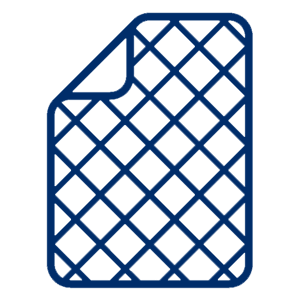
If you have a safety cover, begin by first clearing debris from the cover using a pool brush and/or a leaf rake skimmer net. Pop off most of the springs to reduce cover tension, which will make cleaning easier.
Use a leaf blower to clean the deck, and release the remaining cover springs from each anchor. Before folding, lower all of the brass anchors into the deck to prevent your cover from snagging. Carefully pull one section at a time up onto a clean area of the pool deck. Fan fold the cover, accordion style, seam to seam. Use a leaf blower or garden hose to clean the cover before making each new fold.
Stuff it into the cover bag and set it up on a chair to drip dry. Store the cover indoors, if possible, or use moth balls or mint bags to keep nesting rodents away.
Removing a Solid Pool Cover
If you have a solid pool cover or an above ground pool cover, use a cover pump to remove any water on top of the cover. Clean off any leaves and debris with a pool brush or pool leaf rake. For inground pools, remove the water bags one at a time, careful not to drag them across the concrete, or drop them. Drain them completely, and then clean, dry, and store them away.
For above ground pool covers, loosen the winch & cable system or cover clips, after draining the cover. Then carefully pull the cover off the pool and roll it up so you can carry it. Take the cover to a large area where you can clean, dry, and fold it. Store indoors if possible, or inside of a plastic bin or large trash can, or placed up across the garage rafters.
Winter Freeze Plugs
Make sure all winterization plugs are removed from the pool before you start the filter pump. There are also drain plugs for the pump and filter removed in the fall. Now is the time to re-install these plugs again, using Teflon tape or other thread sealant to prevent pump air leaks or filter drips. Drain plug o-rings should get a bit of Teflon-based pool lubricant to help maintain a good seal and protect the o-ring.
Also use some of the Teflon lube on the pump lid o-ring and on other rubber o-rings on the pool filter or push-pull backwash valve.
Pool Equipment Reassembly
- Resecure ladders and hand rails into deck sockets.
- Remove all plugs from wall returns, cleaner lines and skimmers.
- Replace skimmer baskets and wall return eyeball fittings.
- Pull out the pool cleaner and stretch out the hose straight down the deck, but don’t connect it yet.
- Check and inspect diving board bolts or slide legs and ladder for safety.
- Check that floor drain covers are securely attached for safety.
Pump Equipment Reassembly
- Replace drain plugs for the pump and filter, and heater or chlorinator.
- Screw pressure gauge onto top of filter tank, with Teflon tape.
- Open all closed valves, and place filter valve in the filter position.
- Check that the filter grids or cartridges are inside the tank, and the filter clamp band is tight.
- Lube the pump lid o-ring, and plunger o-rings.
Starting the Plumbing System
Starting the plumbing system will be different for every pool. First, if you have a multiport valve with the option to send the water to “waste,” select that setting. Doing this will prevent dirty winter water from sticking to your filter as you prime the system. Roll out your backwash hose and pump the water out from the skimmers and drain.
Make sure all valves to and from the pool are open before turning on your pump to begin priming. If you have a separate main drain line, you may have more success starting the system with this valve closed, starting it “off the skimmer”, as they say.
Pump Won’t Prime?

If the pump doesn’t catch prime and begin pumping at full steam after a minute or so, shut it off and repeat the priming and starting process. If it still won’t prime and catch, try starting off one skimmer only, or try opening the main drain valve. DE or sand filter with a multiport, you can place the valve on waste or recirculate for start-up. Pool pumps will catch prime more easily if the water isn’t forced through the filter, and either waste or recirculate has less resistance to overcome. If it still won’t catch, look for air leaks, usually from a loose pump lid, or loose pipe coming into the pump. A Drain King can be used to help prime a pump from the skimmer, and also to pressurize suction lines and pump to look for air leaks.
When the pump is running full steam, slowly open the main drain valve to introduce a bit of air, until you can open it fully. If the pump bogs down and loses prime, close the valve fast, until it catches prime again.
Start the pump again, and keep an eye on the pressure gauge. If it spikes above 30 lbs, shut off the pump immediately and look for the reason. It could be due to a closed valve on the return line, or plugs left in the pool. If you have a DE filter, add the D.E. powder into the skimmer quickly.
Close the air bleeder valve when it sprays a continuous stream of water. Note the filter pressure at start-up — this is your clean, starting pressure. Write this number, the clean psi reading, on your filter tank with a permanent marker, or make a mark on the gauge face with a Sharpie pen or marker.
Cleaning the Pool
The initial cleaning is crucial after a spring pool opening. Make sure to first brush the tiles and pool walls, then use a skimmer net or leaf rake to clear off the surface, then vacuum the bottom of the pool. Depending on the amount of debris and leaves on the bottom of the pool, you may need to use a leaf canister or a Leaf Gulper to avoid overloading your strainer.
Water Chemical Balance

Balancing your pool water during spring pool opening begins with a high-quality pool test kit. A good test kit evaluates the chlorine, pH, Calcium Hardness, Total Alkalinity, and Cyanuric Acid levels in your pool. Accurate testing is important for accurate treatments. Be sure to replace your test reagents annually, and store them in a cool and dark location.
To make balancing your pool water easier, take a look at our Spring Start-Up kits. These kits contain all the necessary chemicals to get your pool up and running. Once your pool water is balanced, retest it over the next few weeks to ensure it maintains the proper levels.
If you followed a winterizing procedure and used a winterizing kit at the end of the previous swimming season, your chemical balance shouldn’t be too off base. Use a quality algaecide, clarifier, and pool shock, to kill any potential algae.
Fixing Leaks
Since you have been running the pool system throughout the process of spring pool opening, you should be able to identify any leaks in your plumbing. If you spot any leaking water, shut off the system and locate the crack or damaged plumbing. Patch up small cracks or leaks in the plumbing equipment with a pool leak sealer or pool putty. However, if the cracks or problem areas are larger — replace the damaged section of pipe or fittings.
As you inspect the skimmer weirs, look around the area where the plastic skimmer meets the pool wall. Cracking of the plaster mix around a concrete skimmer, or rusty spots around a vinyl liner, may indicate a leak. If you spot debris stuck in these areas, this is indicative of a leaking pool skimmer. Use epoxy putty or pool plaster mix to fix a concrete skimmer. For vinyl skimmers, use a vinyl patch kit or replace the skimmer faceplate gaskets to fix the leak.
In The Weeks to Come

Run your pool filter 24/7 for a few days, checking on the filter pressure and water flow every 8 hours or so. Backwash sand or DE filters when the pressure gauge rises 8-10 lbs above the clean, start-up pressure. For cartridge filters, shut off the pump, remove the filter and rinse it off with a garden hose spray nozzle, when pressure has risen at least 5 psi, or flow is noticeably reduced.
When the water clears, you can set the time clock to run 12–15 hours daily, increasing to 18 hours daily when water temperatures approach 80°F. Maintain a constant chlorine level of at least 2.0 ppm. Check your pH weekly, and your Total Alkalinity, Cyanuric Acid, and Calcium Hardness levels monthly. Shock the pool every 4–6 weeks, or if algae is visible.
Keep the pool clean with regular skimming, vacuuming, and brushing. Also empty the skimmer and strainer baskets regularly to avoid blockages. Check the filter and water level and condition every day when possible, to ensure all systems are operating.
Understanding how to handle a successful spring pool opening is the key to setting yourself up for a great swimming season. As long as you maintain regular water testing and a cleaning schedule, you can worry less about major water treatments or repairs.

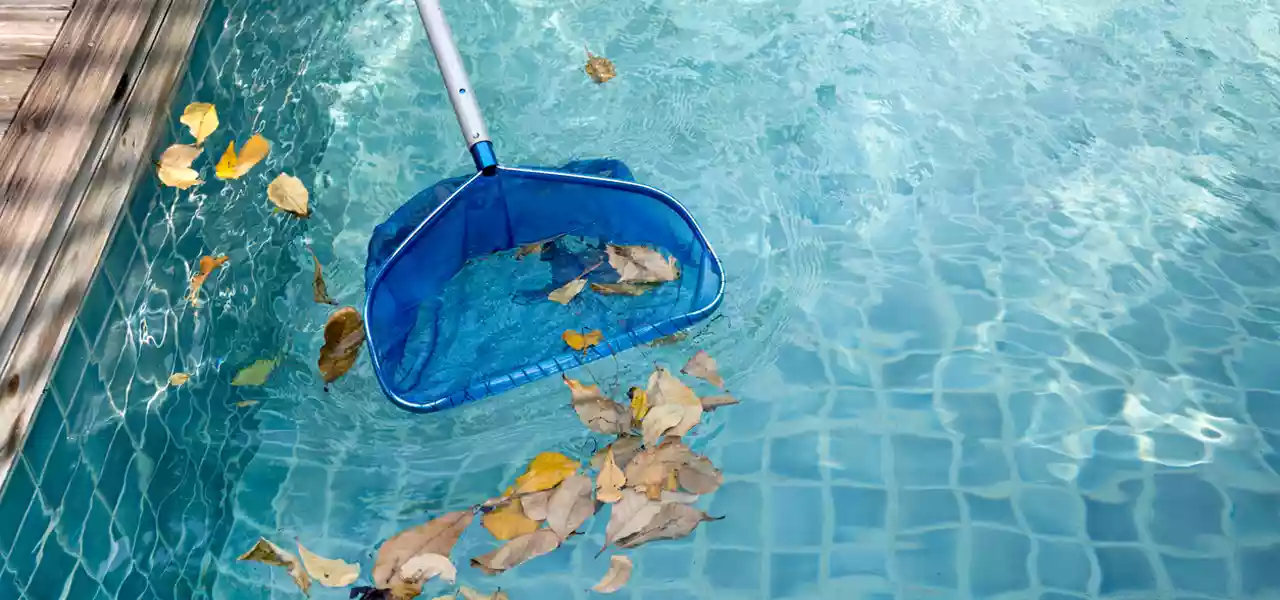
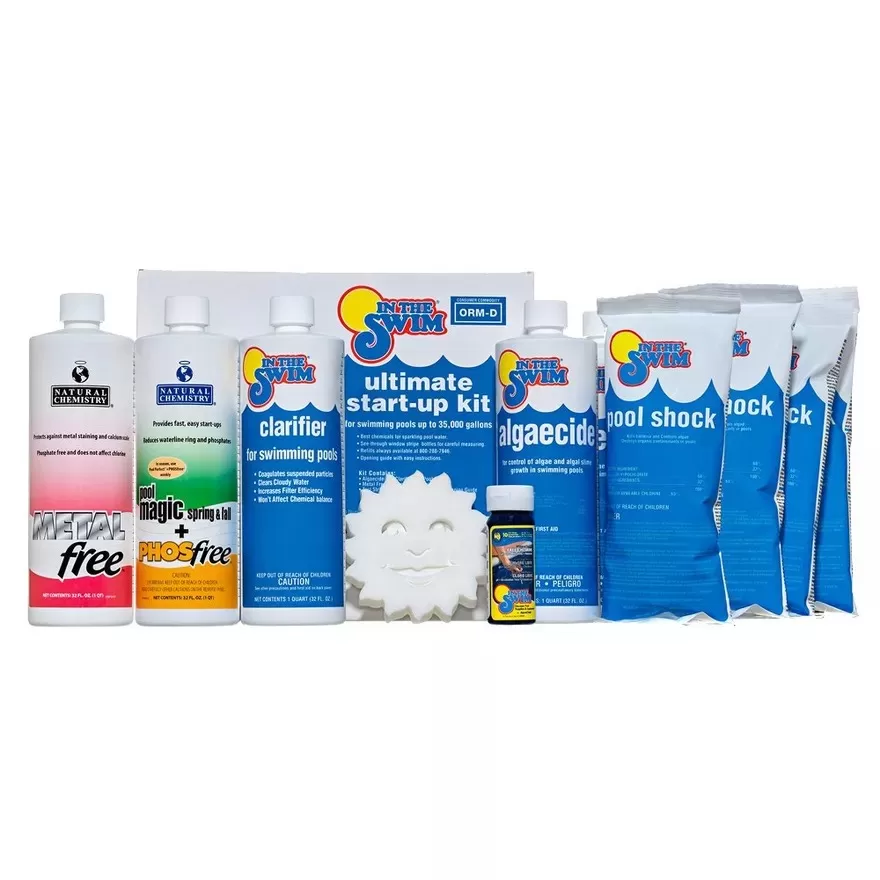
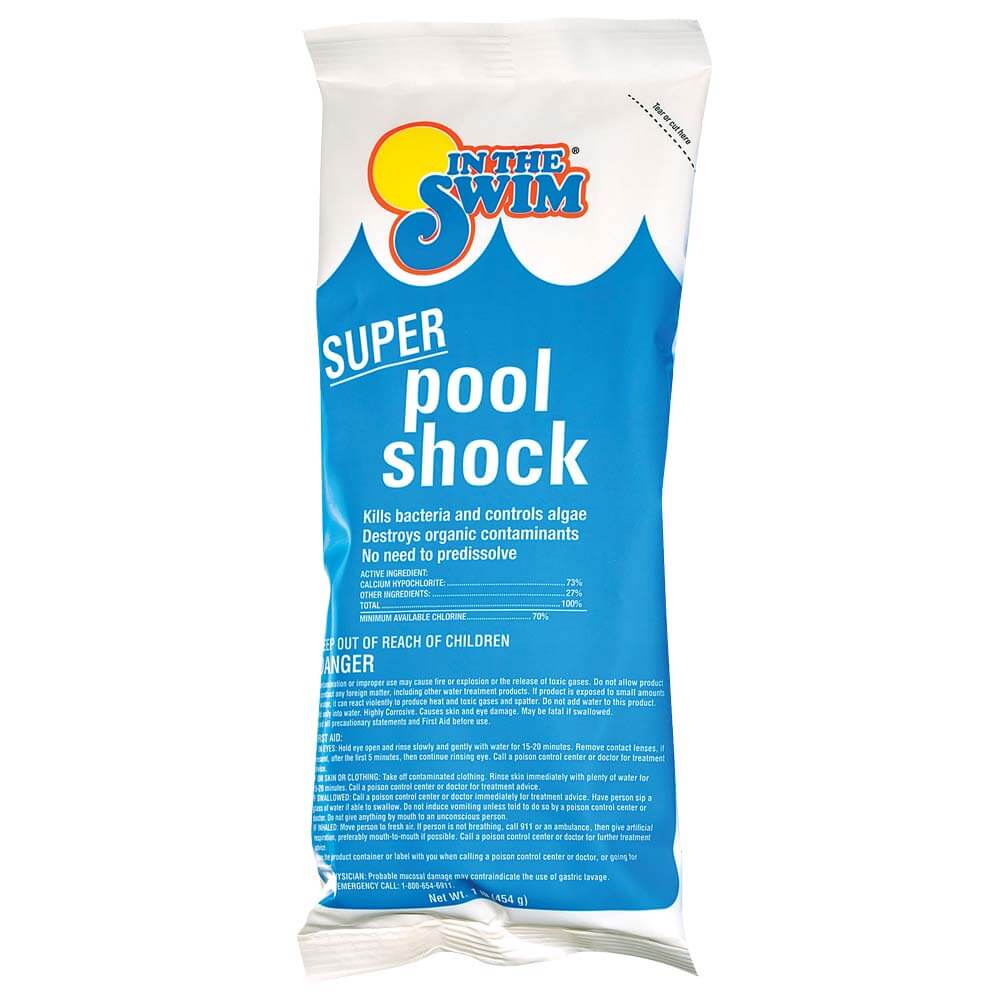
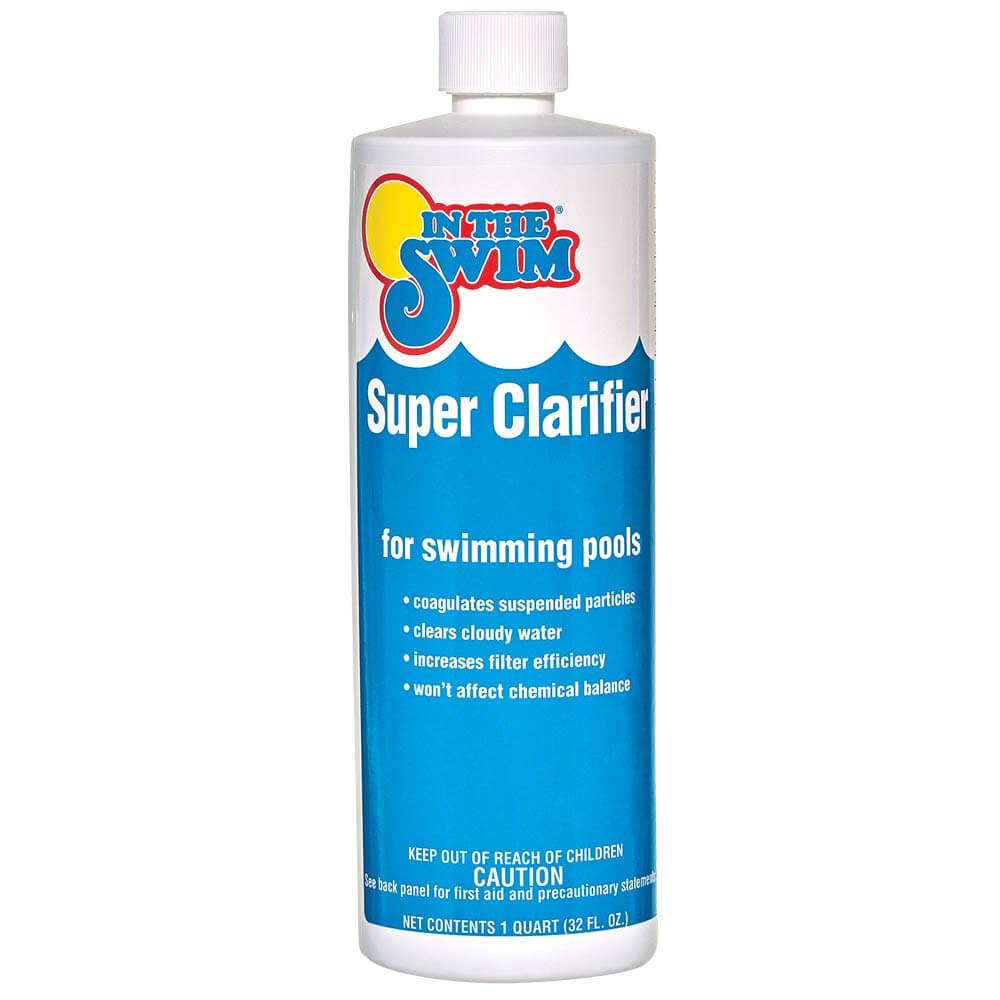
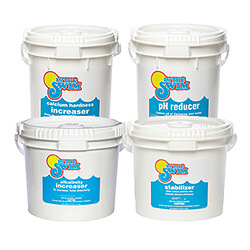
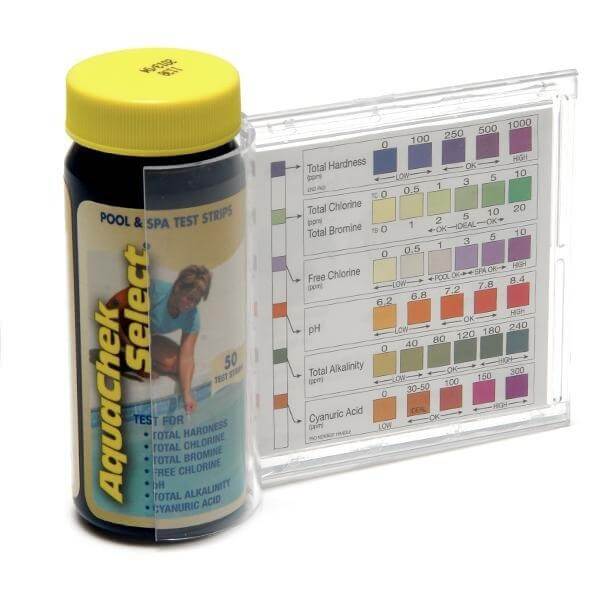

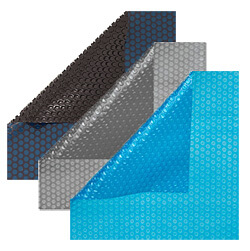

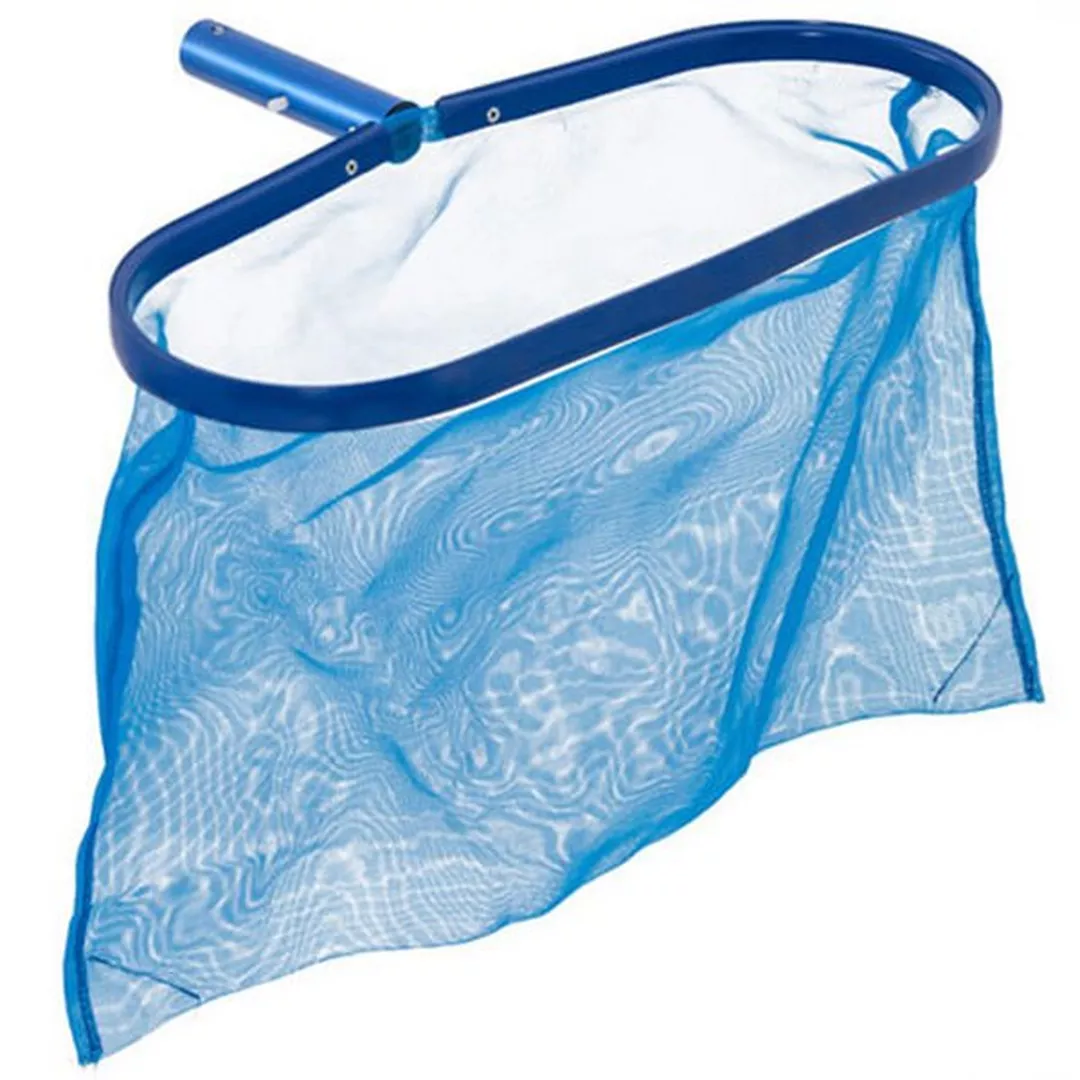
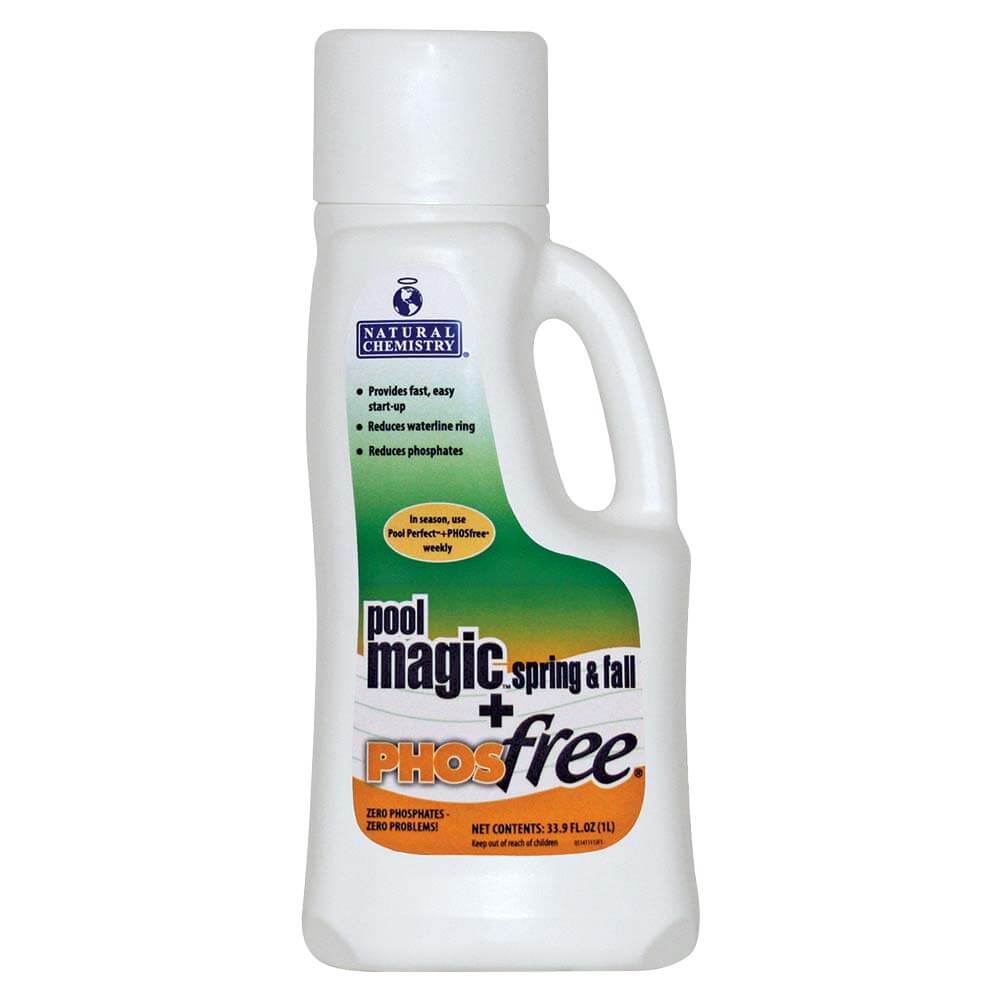
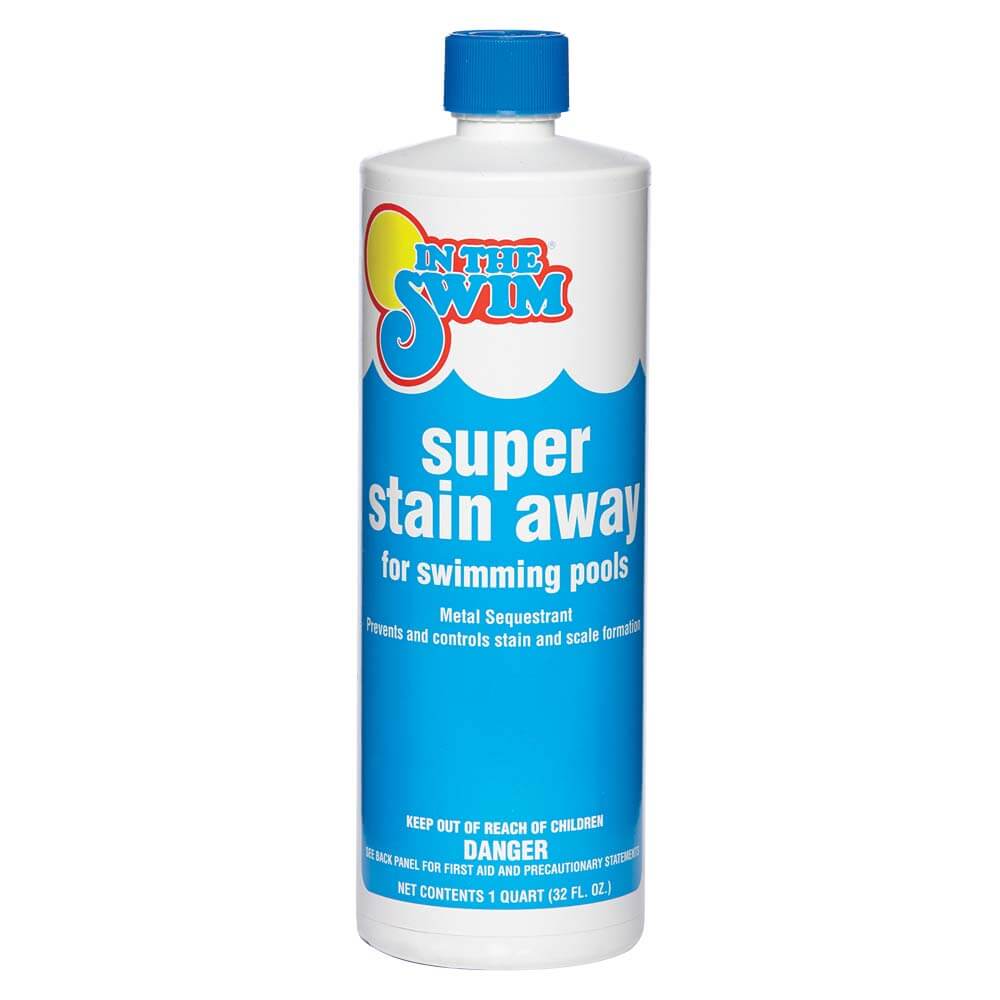

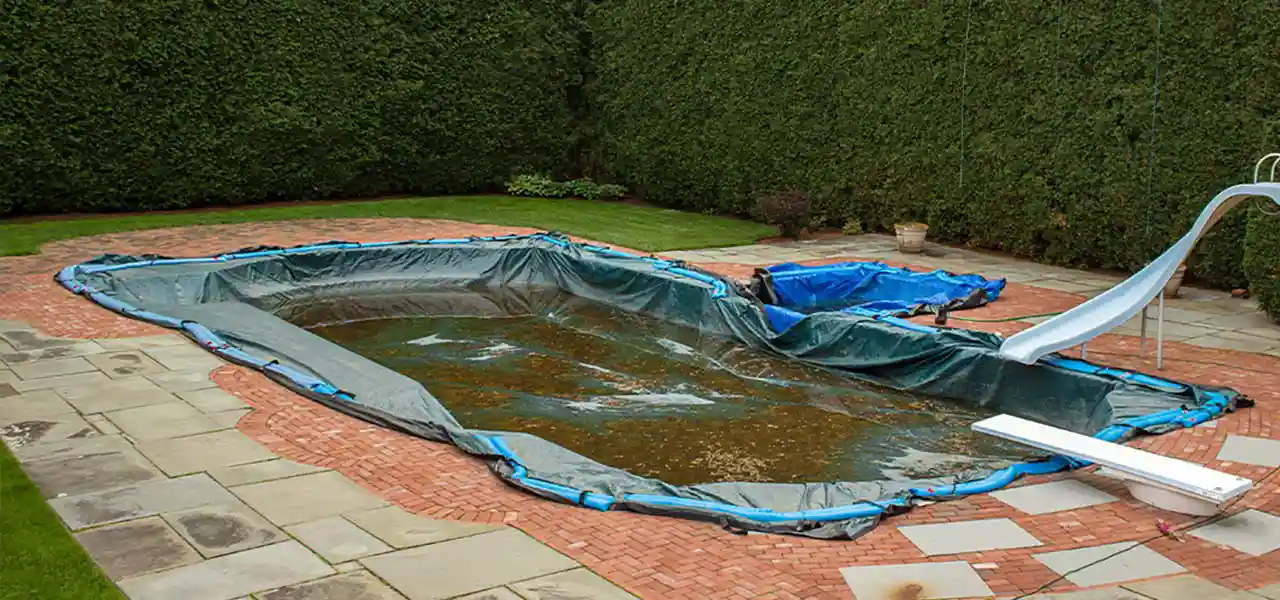
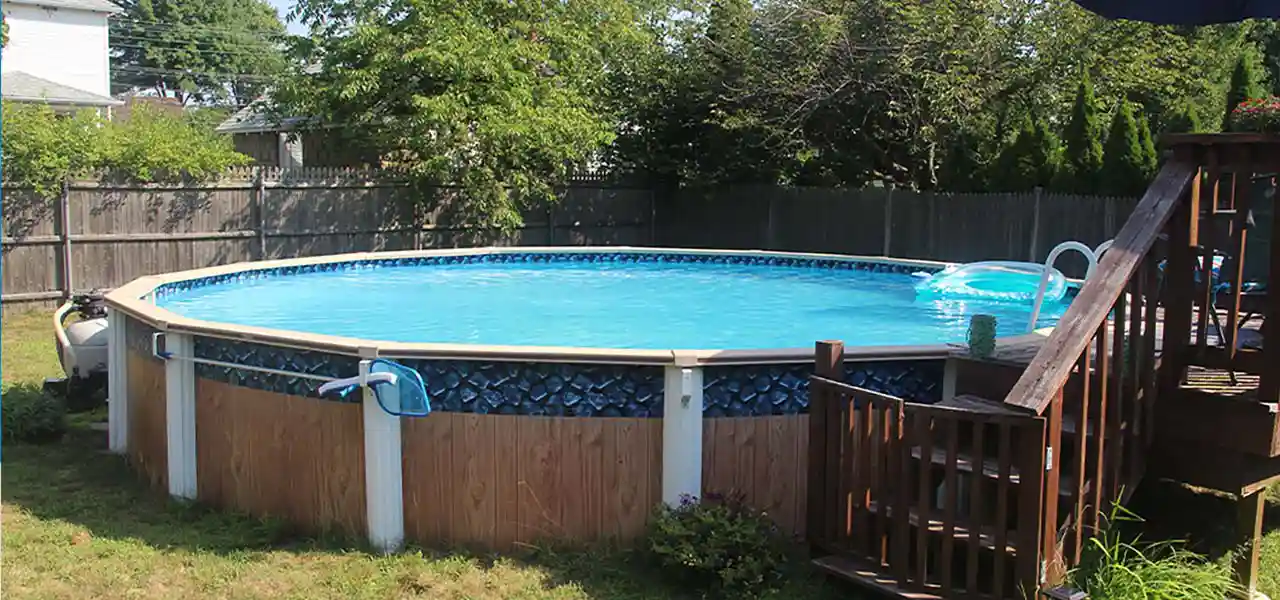
I moved into a mid century home with an above ground pool thats in-ground. It was full of some fairly green water.. I added chlorinating granules before I even had a pump and it cleared the water for a few days. I noticed quite a bit of stuff on the bottom but not nearly as bad as I had expected, it wasn’t covering the bottom maybe 50% . Anyway i let it go back to nature while I was finding a pump. Its a 5000 gallon pool and someone gave me an intext pump that I have going.. I skimmed and rake the bottom endlessly but not being able to see the bottom makes it tricky. I decided to start the chemical process since I have zero alkalinity going. I added 4lbs and the next morning an amazing thing. All the crap was rising to to the top Why can’t I find any other account of this! So i kept skimming and raking all day as it rose. The reading still says zero so I added another 4lb box.. Still low reading. Got inpatient added half a bag of shock (should be right amount for 5K pool) now theres lots of whitish bubble type stuff on the top and its kind of oily looking.. I am still skimming> Finally my ? am I doing this right? 5 hours later and still no chlorine reading and low low ph. I have already changed the cartridge filter and that gave it a newed boost. I put a sock in the strainer i wouldn’t clog up the pump /filter with this slimy goo. It doesn’t feel like much out of the water but looks like a lot when its floating. What now!/
Hi Rebecca, you may need some cyanuric acid, aka Stabilizer, to protect chlorine from the sun. Use 2 lbs to raise the level to around 40 ppm. Keep filtering (24/7), and keep the pH and alkalinity correct. Your test strips may be bad or expired, if they are not giving correct results.
Good morning, We have an above ground our liner has holes in it in several different areas above the water line. I know I will need to fix before doing anything to get it open. What is your suggestion on fixing the holes. They are not small holes. They are long in shape.
Hi CHristy, for large rips, you just use a large patch, ugly but effective. The liquid vinyl patch kit is best for large rips or tears. It comes with a patch material. Pull out the patch material and place under heavy books or something to remove folds and wrinkles. Cut into a rounded patch that extends around the tear by at least 1″, or 2″ on the ends, and 1″ above and below the horizontal slash. Clean the areas well, with a dishwasher detergent (not dish soap, and use carefully so you don’t spill a lot into the pool) or use TSP. Clean on both sides, and then dry well. Sand lightly with fine sandpaper, then wipe off with a microfiber cloth, or wipe quickly with mineral spirits. Apply the glue to the patch and to the liner, and stick it on there firmly. Spend 20 minutes with it, lightly pressing any edges, if it starts to curl-up. You can do a patch on both sides of the pool wall, if desired for added strength, doing the outside patch first, then an inside patch.
We peeked in our inground pool and found our water level down to the bottom step. We drained it when we closed it but not much. It’s about a foot lower than when we originally drained the pool. Do you have any comments or suggestions?
Hi Lauren, it could be that there are holes in the cover, and the cover pump has been pumping out the pool thru holes in the cover. Or, if you don’t use a cover pump, did someone lower the water level a month or two back, and not tell anyone? It’s happened, that’s why I ask… Or, if the pool is vinyl (or concrete), it could have a hole (or crack) that is slowly losing water. What I would do is remove the cover and start looking for a leak, at the level where the water has stabilized. Pay close attention (as a clue) to any areas where you can see debris stuck to the wall, or actually into the hole. Search Leak Detection on our blog here and you’ll see lots of tips for going deeper into leak detection, for different pool types.
I took some bad advice and when I closed my pool I threw some chlorine tablets on the bottom thinking it would reduce the algae when opening this year. The chlorine tablets literally stained the fiberglass bottom. I have dark brown 3 inch circles where the tablets sat and the remainder of the deep end has been stained a tea color. I tried oxalic acid, the lemon rub and plain scrubbing with a nylon brush. Nothing is working. Any suggestions.
Hi Steven, I do not have any suggestions sorry, when tablets are laid on the bottom of any pool type, they can make a permanent stain. The only thing I can think of is to scrub it with wet/dry sandpaper, which will rub off the gelcoat finish as well as the stain, but even that may not work, as the stain may be all the way through, and onto the fiberglass itself (sorry) 🙁
How long do you wait to put in the robot after opening the pool?
Hi Tiffany, I would just wait until the chlorine level is not sky high – otherwise, go ahead and use the cleaner, even if the pool is dank and dark looking…
We drained our pool with the intent to paint vs. replastering. It’s not in that bad of shape, except at the deep end (there are a few red spots and dirty looking spots). However, I am concerned about painting, as our pool has a “bird cage” screen enclosure and shade from a large tree. Upon emptying it, I have watched this one spot for 3 days that is still very moist even in roasting Louisiana heat.I am worried that the pool does not get enough direct sunlight to cure well if we paint. Also, the main drains at the bottom do not have an access to open at the bottom, they simply run straight to the pump. Does this matter?? Second, I read, we should TSP/acid wash/TSP again, paint 1st coat thinned with mineral spirit, paint second coat and then fill?? Is it necessary to TSP/acid wash/TSP before filling? And do you have to paint the entire pool, or can you just paint the bottom?
Hi Candi, the surface must be completely dry if using Epoxy paint. If using acrylic, it doesn’t matter if surface is damp. I don’t understand the main drain question, but you should need to remove the MD cover to get out all of the water. You do need to do the TSP/Acid/TSP – the TSP is a degreaser and the acid removes scale and roughens the surface – both are important steps, but you do not do it after painting, only before, and then the pool dries for a few days (until dry). Yes, you can paint just the floor and not the walls. Not normally done that way, but yes you could do that.
We just moved into a home with a pool and had a professional come out to turn everything on. No idea what he did…my husband was here and I don’t know if he even knows. This morning, before adding pool chemicals, I went through various steps to backwash it (we have a sand filter BTW), and everything looked good as far as the pump, the clear plastic part, etc. The pool, however started having crud rise to the top. Some of it was leaves and grass, but lots of it looked like long strips of white tape and I even thought maybe there was a plastic bag. Then I noticed tons (TONS) of decomposed white looking worms. Gross! I went to the pool place and showed them a picture. I was instructed to add 2 bags of shock and to let the pump run continuously. We have been skimming as much of the gunk as possible. What else can we do??? How do we get rid of this wormy junk? It sees like everything disintegrates into smaller pieces as we try to skim it out. We’ve been working like crazy to continuously empty filters.
Hi, worms are normal for a spring opening, and white worms are those bleached by chlorine shock. The best thing to do is to vacuum the worms out of the pool, brush the pool and vacuum again. Empty the pump basket in a sunny area, the birds will go wild. Most of the worms end up around the main drain (inground pools), so you could vacuum the pool first, before shocking to prevent them from ‘rising from the dead’ to float around like worm zombies, lol.
Thanks so much Davy! My husband just got home from work and I told him he missed quite the event today getting rid of waste, backwashing, rinsing, and skimming dead worms out of the pool. Yuck! My father-in-law came over who took care of their pool for 28 years. He said he’d never seen anything like it, it was that bad! We have a Dolphin robot on it’s way so hoping that helps tomorrow. I honestly had no idea what opening a pool entails.
Dave. Hey there. Listen We just installed an in ground fiberglass lined pool. The pool company has made mistake after mistake and but that’s all getting handled except for one thing. There’s a concrete stain lined around the pool art water level. They are daring it will go away in a year. That’s a joke. Can I get an email address so I can send you a picture. It needs to be removed and we’re wondering if what the pool company is saying is correct.
Hi, you can send an email to swimmers at intheswim.com to send me pics. Or for anyone that has a question – pics speak 1000 words! 🙂 Davy
I understand how worms can get in an in-ground pool. When it rains, they are everywhere. Makes sense that they’d accidentally fall into a pool at ground level.
I just opened up my above-ground pool (52″) and found a dozen or two earthworms in varying stages of decomp. The water is actually clear and there were no holes in the cover. We lost about a foot of water over the winter. Our ground hasn’t been mushy or anything like that and we siphoned off any excess water on the cover throughout the winter. How did the worms get there????
Hi Michelle, you are not alone, worms invade almost every pool that is closed. in bad cases they can create a stain around the main drain several feet wide. They can also stain vinyl as they decompose. To remove the stains, balance the chemistry and shock the pool, brush the stained area. repeat if needed.
How do they get there? my theory is that they ‘smell’ the water and just crawl under the pool cover and plop in the pool. Now in an Aboveground pool like yours, it does beg the question. Did they crawl up the sidewalls of the pool? I guess so! Or, if your liner has a hole, (you say you lost a foot of water over the winter), they can ‘smell’ that water, and if large enough I guess they might just crawl through a hole in the liner, into the pool?